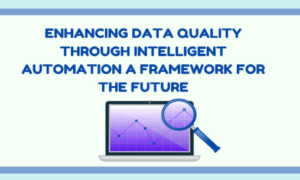The value of what organizations can do with their data is growing every year. Yet McKinsey found that less than half of data teams are providing value to their respective organizations, despite increasing investment in data across industries.
Why is it so difficult for organizations to see success in the data-driven projects they pursue? One major reason lies in a lack of connectivity to different data sources and real-time sync. Businesses big and small often have an ad hoc approach to integration, building processes over time in a piecemeal way. This leaves data prone to being ignored or overlooked, while other information requires a time-consuming process to sufficiently collect and analyze.
Intelligent automation can solve many of these issues, removing manual processes prone to error and replacing them with streamlined and efficient workflows. The key is to understand how to connect your data to increase profitability, unlocking new value by closing information gaps.
The Data Silo Dilemma
The total amount of data created worldwide hit 64.2 zettabytes in 2020, and is expected to reach 180 zettabytes in 2025. Tripling the amount of data we generate in just five years will present many new opportunities, along with some real difficulties.
In the business world, data silos are the pitfall of our data-driven age. These are isolated repositories of information that aren’t connected with other systems in an organization.
Data silos are prevalent in organizations where each employee generates, collects, and stores a high volume of data without having centralized data into a single view. At first, this type of siloing may seem like a non-issue—employees within the department think they know where the data is stored and how to access it.
As time goes on, however, people leave organizations, taking valuable information about the data processes. New initiatives mean previous databases are forgotten or overlooked, and attempts to connect data across departments are often done manually, in a slow-moving and costly process.
This presents a problem for business leaders who want to operate faster with help of streamlined, seamless data flow. Getting quick access to data business leaders can make more informed decisions and seize new opportunities as soon as they arise.
Building Connectivity & Integrated Solutions
Automating the task of breaking down data silos offers better value and more efficiency than handling the process manually. Intelligent automation (IA) can handle the process of creating connectivity and automation across an organization. The no-code integration solutions have a powerful effect on an organization, such as connecting marketing automation platforms with a sales team’s Customer Relationship Management (CRM) software to better align both departments. This leads to better customer-centric campaigns and a greater focus on personalization—essential for businesses that want to succeed their competitors.
Integrating data in this way builds alignment between departments, automates operations, synchronizes the data, and unlocks deeper insights. By automating tasks that were previously done manually, organizations reduce human errors and free up time for employees to focus on more strategic work and revenue generation.
Most importantly, no-code integration solutions provide scalability. Applying this solution to business and operational processes, organizations benefit from scalable data infrastructure that can handle the growing amount of data, processes, and systems.
Comprehensive IA With Put It Forward
Put It Forward’s No-Code Data Integration advances the capabilities of Intelligent Automation as a single platform to connect the entire organization. With over 300 pre-built certified connectors, Put It Forward helps connect cloud-based and on-premise sources and centralize data into a single view.
The integration piece of Intelligent Automation provides low-code capabilities, and there’s no need to spend extra costs and hire a team of developers. With Put It Forward, businesses get consolidated data in a matter of days, bringing IT costs and human error to a minimum while maximizing efficiency gains through IA.
Data integration can be complex, but with a no-code IA platform, the heavy lifting happens behind the scenes. Leadership teams leverage the benefits of better connectivity to inform their decisions and stand apart from the competition for increased profits.
To see how Put It Forward Intelligent Automation can leverage your business, schedule a free demo today.



































